Abstract
Lymphocytes from 180 patients with a variety of malignant diseases were collected and fused with a human myeloma-derived line, LON-LICR-HMy2/CAM1. A total of 162 hybridomas was obtained. Only B lymphocyte markers were found on the surface of the fusion products. Flow cytometric analysis revealed a stably increased DNA content in the hybridoma cells. Some hybridoma supernatants were found to contain new Ig chains. Anti-tumour binding activity was found in 12 supernatants.
Full text
PDF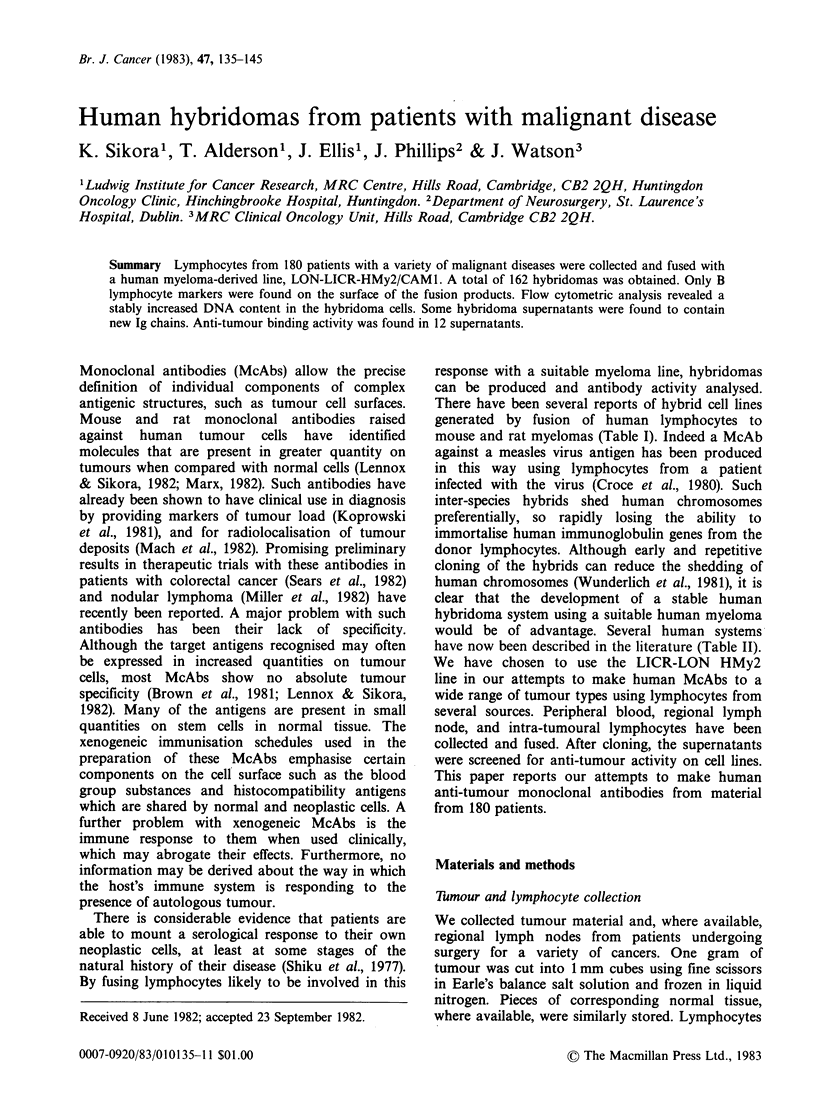
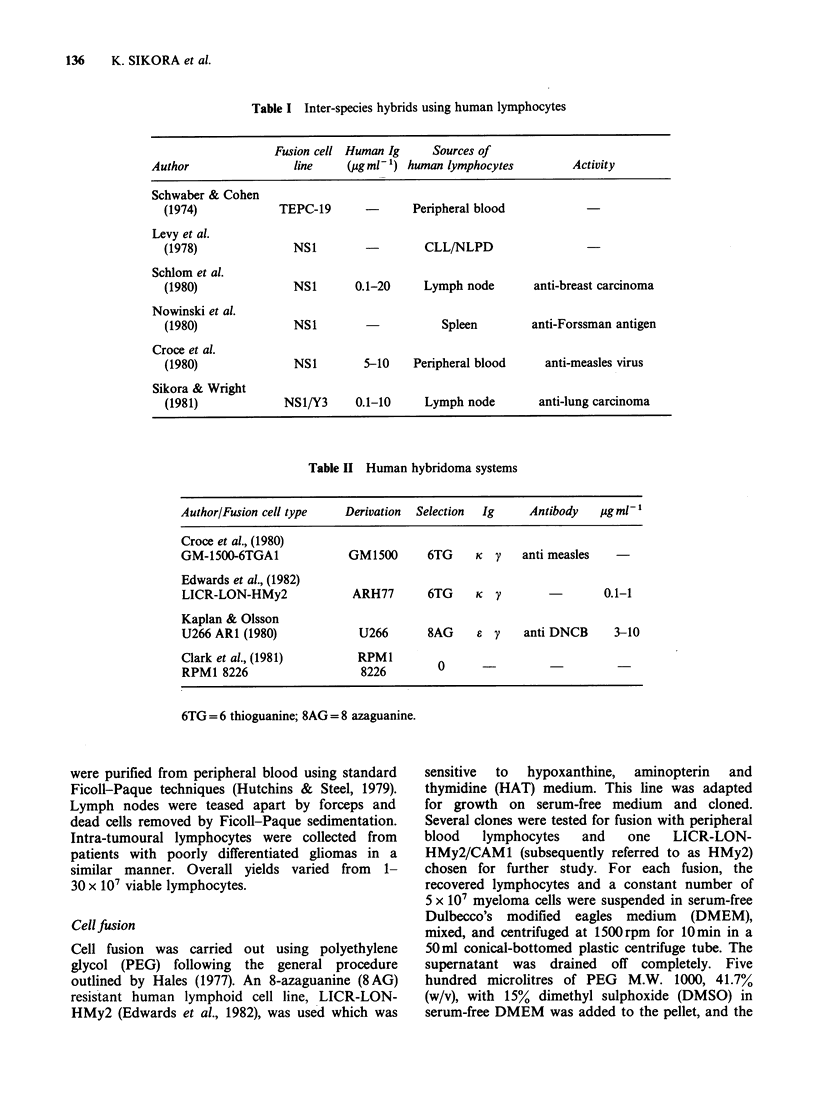
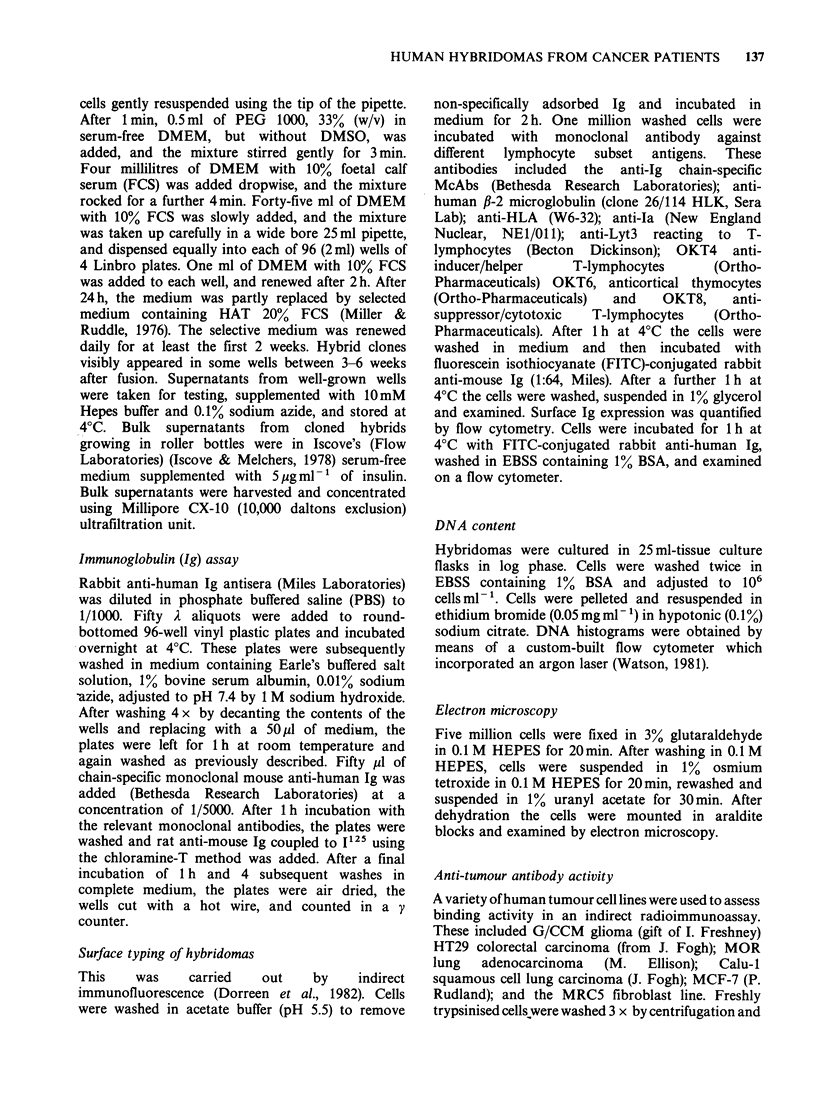

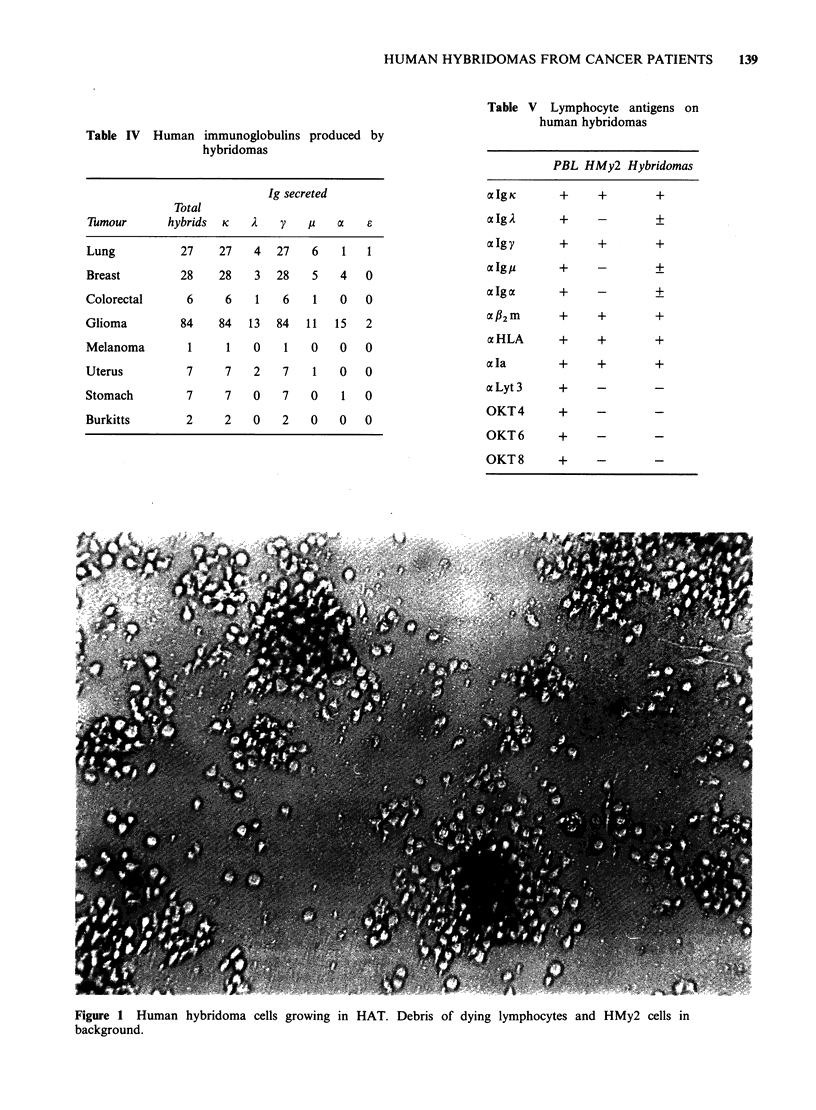

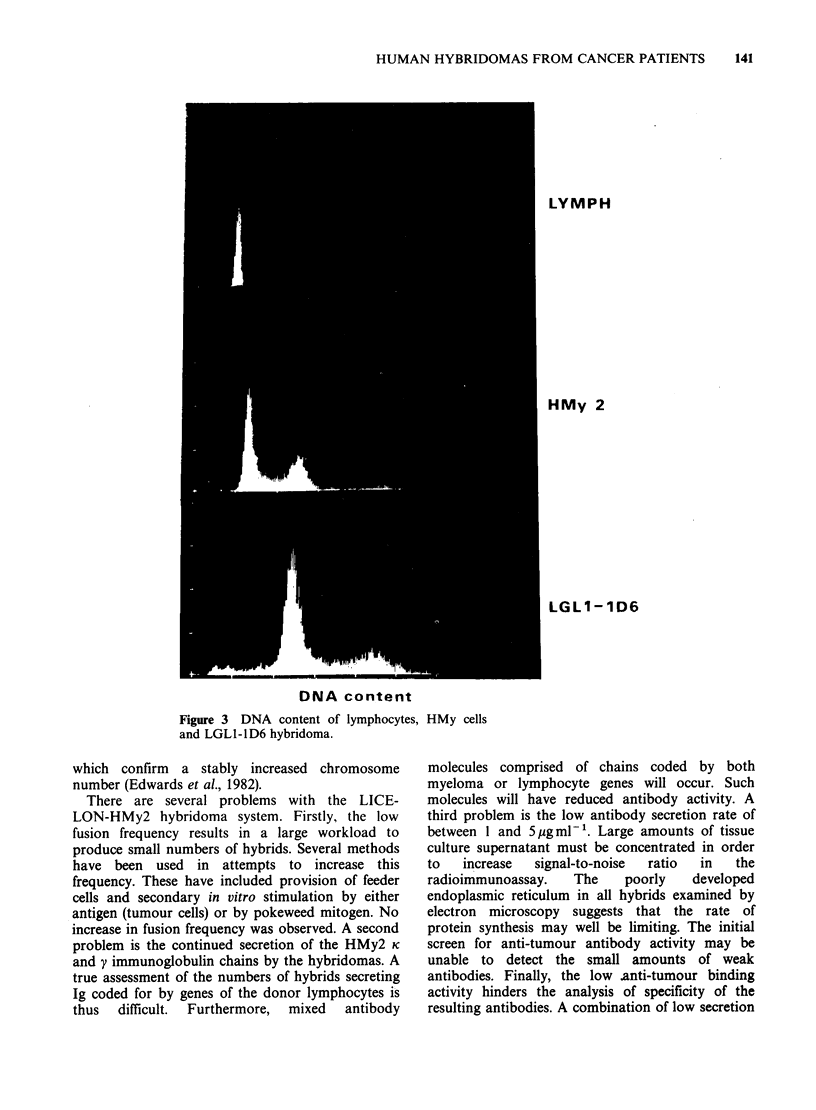
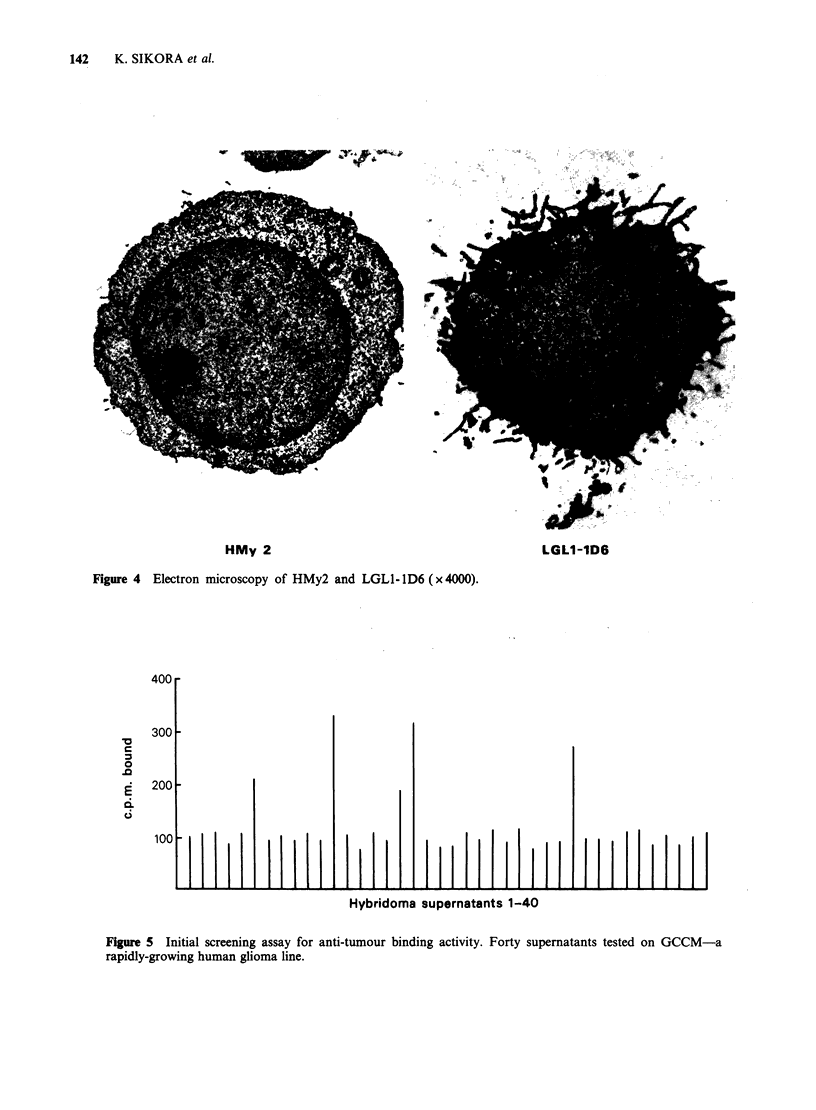
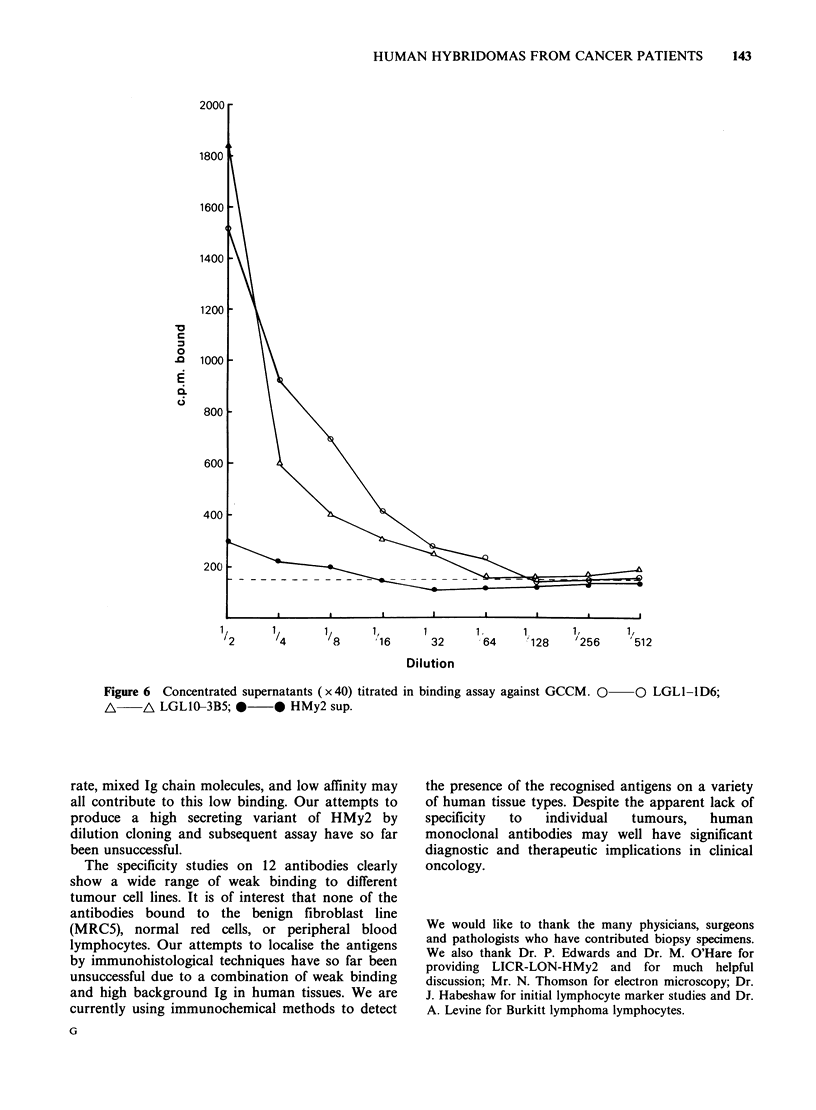
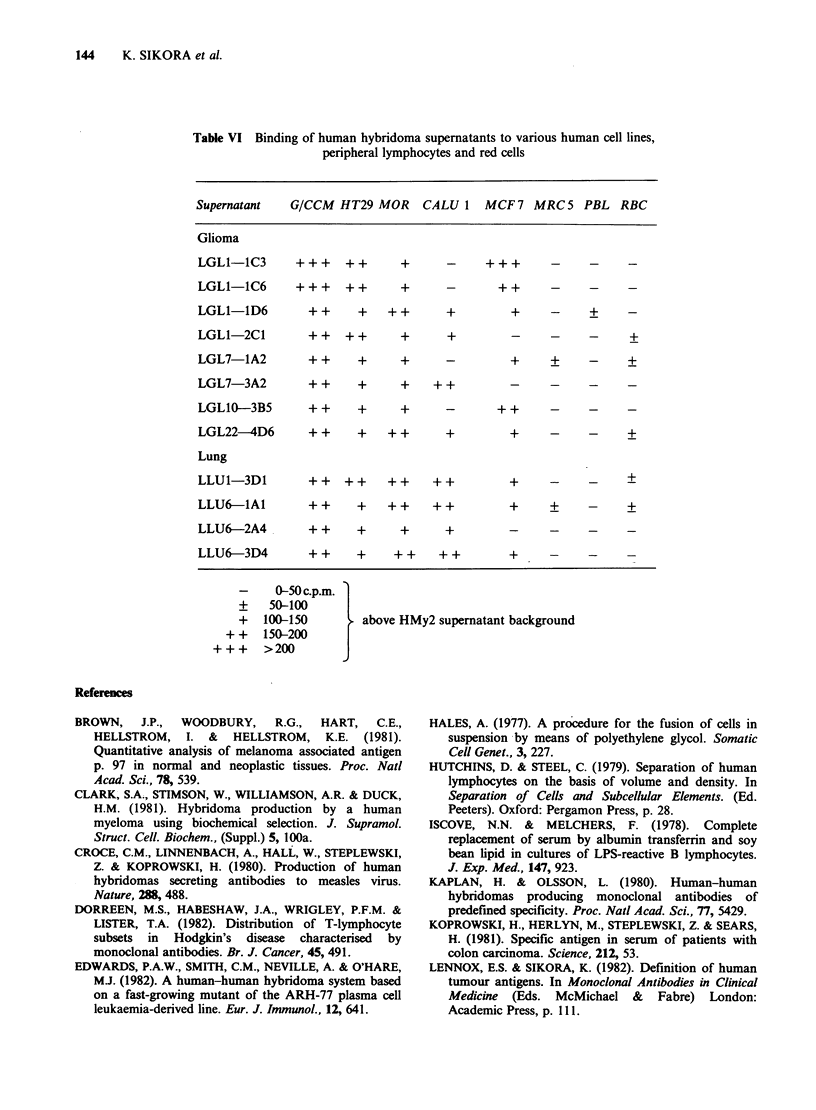
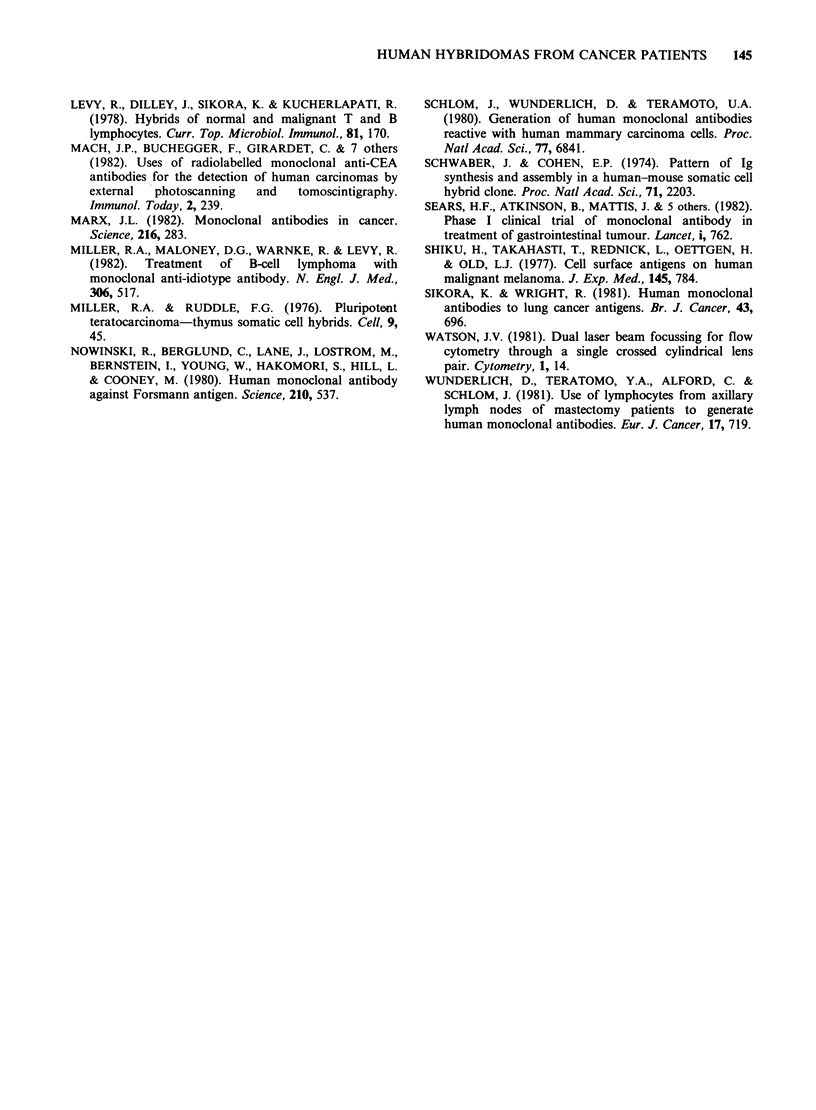
Images in this article
Selected References
These references are in PubMed. This may not be the complete list of references from this article.
- Brown J. P., Woodbury R. G., Hart C. E., Hellström I., Hellström K. E. Quantitative analysis of melanoma-associated antigen p97 in normal and neoplastic tissues. Proc Natl Acad Sci U S A. 1981 Jan;78(1):539–543. doi: 10.1073/pnas.78.1.539. [DOI] [PMC free article] [PubMed] [Google Scholar]
- Croce C. M., Linnenbach A., Hall W., Steplewski Z., Koprowski H. Production of human hybridomas secreting antibodies to measles virus. Nature. 1980 Dec 4;288(5790):488–489. doi: 10.1038/288488a0. [DOI] [PubMed] [Google Scholar]
- Dorreen M. S., Habeshaw J. A., Wrigley P. F., Lister T. A. Distribution of T-lymphocyte subsets in Hodgkin's disease characterized by monoclonal antibodies. Br J Cancer. 1982 Apr;45(4):491–499. doi: 10.1038/bjc.1982.84. [DOI] [PMC free article] [PubMed] [Google Scholar]
- Edwards P. A., Smith C. M., Neville A. M., O'Hare M. J. A human-hybridoma system based on a fast-growing mutant of the ARH-77 plasma cell leukemia-derived line. Eur J Immunol. 1982 Aug;12(8):641–648. doi: 10.1002/eji.1830120804. [DOI] [PubMed] [Google Scholar]
- Hales A. A procedure for the fusion of cells in suspension by means of polyethylene glycol. Somatic Cell Genet. 1977 Mar;3(2):227–230. doi: 10.1007/BF01551817. [DOI] [PubMed] [Google Scholar]
- Iscove N. N., Melchers F. Complete replacement of serum by albumin, transferrin, and soybean lipid in cultures of lipopolysaccharide-reactive B lymphocytes. J Exp Med. 1978 Mar 1;147(3):923–933. doi: 10.1084/jem.147.3.923. [DOI] [PMC free article] [PubMed] [Google Scholar]
- Koprowski H., Herlyn M., Steplewski Z., Sears H. F. Specific antigen in serum of patients with colon carcinoma. Science. 1981 Apr 3;212(4490):53–55. doi: 10.1126/science.6163212. [DOI] [PubMed] [Google Scholar]
- Levy R., Dilley J., Sikora K., Kucherlapati R. Mouse-human hybridomas. The conversion of non-secreting human B cells into Ig secretors. Curr Top Microbiol Immunol. 1978;81:170–172. doi: 10.1007/978-3-642-67448-8_27. [DOI] [PubMed] [Google Scholar]
- Marx J. L. Monoclonal antibodies in cancer. Science. 1982 Apr 16;216(4543):283–285. doi: 10.1126/science.7063886. [DOI] [PubMed] [Google Scholar]
- Miller R. A., Maloney D. G., Warnke R., Levy R. Treatment of B-cell lymphoma with monoclonal anti-idiotype antibody. N Engl J Med. 1982 Mar 4;306(9):517–522. doi: 10.1056/NEJM198203043060906. [DOI] [PubMed] [Google Scholar]
- Miller R. A., Ruddle F. H. Pluripotent teratocarcinoma-thymus somatic cell hybrids. Cell. 1976 Sep;9(1):45–55. doi: 10.1016/0092-8674(76)90051-9. [DOI] [PubMed] [Google Scholar]
- Nowinski R., Berglund C., Lane J., Lostrom M., Bernstein I., Young W., Hakomori S. I., Hill L., Cooney M. Human monoclonal antibody against Forssman antigen. Science. 1980 Oct 31;210(4469):537–539. doi: 10.1126/science.7423202. [DOI] [PubMed] [Google Scholar]
- Olsson L., Kaplan H. S. Human-human hybridomas producing monoclonal antibodies of predefined antigenic specificity. Proc Natl Acad Sci U S A. 1980 Sep;77(9):5429–5431. doi: 10.1073/pnas.77.9.5429. [DOI] [PMC free article] [PubMed] [Google Scholar]
- Schlom J., Wunderlich D., Teramoto Y. A. Generation of human monoclonal antibodies reactive with human mammary carcinoma cells. Proc Natl Acad Sci U S A. 1980 Nov;77(11):6841–6845. doi: 10.1073/pnas.77.11.6841. [DOI] [PMC free article] [PubMed] [Google Scholar]
- Schwaber J., Cohen E. P. Pattern of immunoglobulin synthesis and assembly in a human-mouse somatic cell hybrid clone. Proc Natl Acad Sci U S A. 1974 Jun;71(6):2203–2207. doi: 10.1073/pnas.71.6.2203. [DOI] [PMC free article] [PubMed] [Google Scholar]
- Sears H. F., Atkinson B., Mattis J., Ernst C., Herlyn D., Steplewski Z., Häyry P., Koprowski H. Phase-I clinical trial of monoclonal antibody in treatment of gastrointestinal tumours. Lancet. 1982 Apr 3;1(8275):762–765. doi: 10.1016/s0140-6736(82)91811-6. [DOI] [PubMed] [Google Scholar]
- Shiku H., Takahashi T., Resnick L. A., Oettgen H. F., Old L. J. Cell surface antigens of human malignant melanoma. III. Recognition of autoantibodies with unusual characteristics. J Exp Med. 1977 Mar 1;145(3):784–789. doi: 10.1084/jem.145.3.784. [DOI] [PMC free article] [PubMed] [Google Scholar]
- Sikora K., Wright R. Human monoclonal antibodies to lung-cancer antigens. Br J Cancer. 1981 May;43(5):696–700. doi: 10.1038/bjc.1981.101. [DOI] [PMC free article] [PubMed] [Google Scholar]
- Watson J. V. Dual laser beam focussing for flow cytometry through a single crossed cylindrical lens pair. Cytometry. 1981 Jul;2(1):14–19. doi: 10.1002/cyto.990020103. [DOI] [PubMed] [Google Scholar]
- Wunderlich D., Teramoto Y. A., Alford C., Schlom J. The use of lymphocytes from axillary lymph nodes of mastectomy patients to generate human monoclonal antibodies. Eur J Cancer Clin Oncol. 1981 Jul;17(7):719–730. doi: 10.1016/0014-2964(81)90227-9. [DOI] [PubMed] [Google Scholar]




